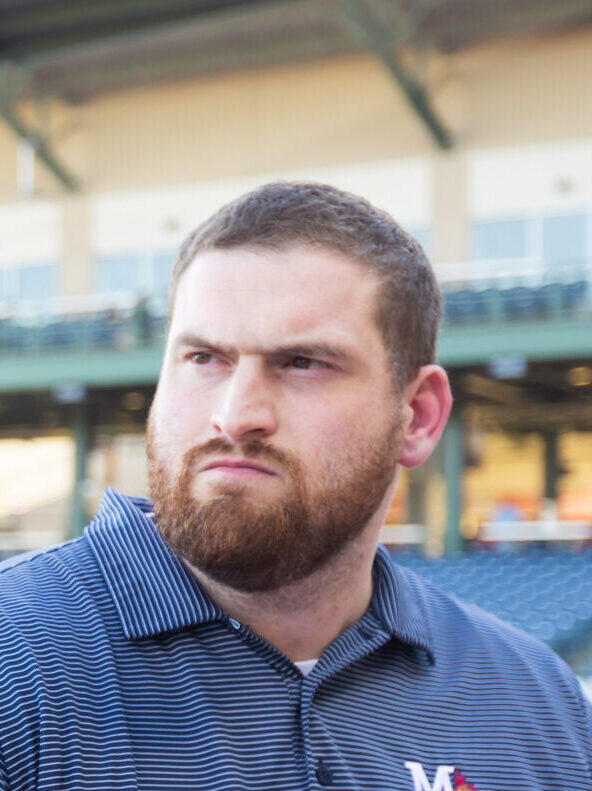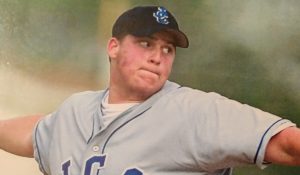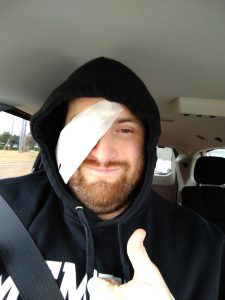Keratoconus Journey: Chris H.

Since he was a young boy, Chris’ life has revolved around baseball. But when he started to have difficulty seeing and was forced to hang up his glove, he began looking for solutions to strikeout his vision challenges. By his early 20s, Chris had given up hope on a future baseball career. His trouble visually tracking the ball and chronic headaches had begun to seriously impact him by the end of college. Determined to find a new way to make a career out of the sport he loves, Chris found his calling in the front office, working with both the marketing and operations teams, as well as close to the action on the field— as a team broadcaster.

With his focus on being the “eyes and ears” of his teams, Chris still faced challenges. Although it took another year or so before he sought help, eventually Chris got to the point where he could no longer drive at night because of his inability to see clearly. It was then that he knew it was time to seek a formal diagnosis.
After several visits to various doctors, including an ENT, brain specialist, and psychologist, Chris finally saw an optometrist who recognized his condition right away. He was referred to a corneal specialist and diagnosed with keratoconus, a progressive eye disease in which the normally round cornea thins and begins to bulge into a cone-like shape, causing distorted vision. The diagnosis came as a major shock to him, leaving him fearful about his future in the career he was beginning to love.
Stealing Signs
Over the next 5 years or so, Chris relied on hard contacts as he moved three times pursuing new career opportunities— from Jackson, Tennessee, to Biloxi, Mississippi, before ultimately getting a call from the Mississippi Braves. Unfortunately, as Chris’ career continued to progress, so did his keratoconus. During the long bus rides with the team traveling to road games, his eyes increasingly became sore and dry. Despite the discomfort, Chris thought his only alternative was to undergo a corneal transplant, so he continued to wear the contacts until he couldn’t anymore.

Chris’ vision was significantly worse without wearing his contact lenses. But, eventually, his vision became fairly poor even while wearing his contact lenses. He increasingly struggled to see what was happening on the field, especially during night games, with the glare of stadium lights making it nearly impossible to tell long drives from home runs. Over time, Chris began finding shortcuts, using umpire signs to help him make calls, printing notes in large fonts, and even bringing live-television monitors into the booth to help him with the play-by-play.
Seeing the Season Through
In Jackson, Mississippi, where he now works, Chris began looking for a new corneal specialist. He visited Dr. William Ashford at Eye Group MS in February of 2019. While there, Dr. Ashford recommended that Chris undergo FDA-approved cross-linking, the first and only therapeutic treatment that stiffens the cornea to slow or halt the progression of keratoconus. After his appointment, he went straight home to begin his research online, where he found patient profiles and learned more about the FDA-approved treatment.

By the spring of 2019, Chris had decided he wanted to move forward with the procedure, but with only weeks until the start of the baseball season, he opted to put it on hold until the next offseason. He would tough it out for one more season before undergoing treatment.
In September 2019, just a week after the season ended, Chris underwent cross-linking in his left eye followed by his right eye about 3 months later. Experiencing some discomfort during both procedures, Chris returned home to rest and in a few days was back to normal. About two and a half months after each eye was treated, Chris started noticing improvements as a result of the procedure.
Stealing a Second Chance
Early this year, Chris returned to his optometrist to be fitted for scleral lenses which have greatly improved his vision. He said it has been years since he was able to see this well. As he prepares for the start of another baseball season, Chris says that he only wishes he had pursued FDA-approved cross-linking sooner.
Now that his condition has been treated, Chris believes that he has been given a second chance to excel at his career— and he has big dreams. He encourages others to get their eyes checked regularly and to keep asking questions if their doctors are unable to identify a diagnosis.
Find a Cross-Linking Doctor Near You
The results described on this site are based on data collected regarding short- and intermediate-term efficacy of treatment. Individual results are not guaranteed and may vary.